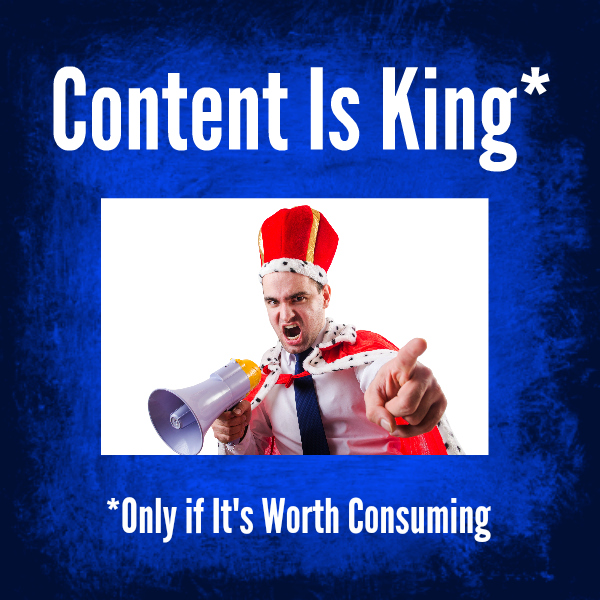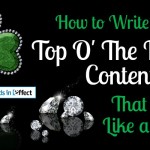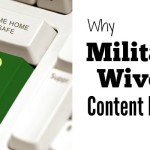By Becky Tumidolsky
When I hear the phrase “content is king,” I imagine two very different rulers.
One is the overbearing monarch who asserts his authority by way of pomp and excess, issuing frequent proclamations to remind his subjects of his presence, prowess, and greatness.
The other is a quieter, nobler king known for his keen discernment, wisdom, and strength. He spends more time contemplating his people’s needs and their future than issuing decrees. When he does speak, he leaves listeners in awe. He naturally commands loyalty, reverence, and respect.
Both kings are expert at capturing attention. But only one understands that inspired and inspiring content (which demands significant thought and care) is the hallmark of great leadership.
The Content Carousel: How Do I Get off This Thing?
Many marketers believe that a fever-pitch cycle of publishing, repurposing, and transmitting content via social media is a requisite for market leadership. The more content you produce, the greater your authority. Churn, baby, churn!
To them I say, “Good luck and Godspeed.” But in my own experience, a constant deluge of content is neither realistic nor ideal.
For starters, it can be a logistical nightmare. For most small- and medium-sized businesses as well as solo service professionals like me, creating truly outstanding content day in and day out—in all forms, across multiple channels—is simply too demanding. B2Bers may have big content ambitions, but as I mentioned in an earlier post, most cite a lack of time and talent as the reason they can’t keep the party rolling.
I used to publish blog posts and create interactive presentations and design infographics at a furious clip. But that became difficult to sustain (client work + family life + pro bono work + political advocacy) and my creative stores were becoming seriously depleted. I was down to critical levels when a wave of panic struck.
My greatest fear was not that I’d miss a self-imposed deadline, but that I’d have a moment of weakness and wind up publishing something not worth anyone’s time—thereby forfeiting readers’ trust and doing lasting damage to my brand.
Folks, riding the content carousel round and round till our heads explode isn’t just unrealistic. It’s also a big mistake.
Here’s Why Less Is More
As I’ve previously argued, producing content that’s poorly conceived, poorly written, and/or poorly edited is worse than producing no content at all. Yet too many marketers succumb to the pressure to produce an insane amount of content without stopping to refuel (research and inquire) and recharge (allow ideas to percolate and simmer). If it lacks ingenuity, creativity, and attention to detail, content falls flat and brings brands down with it.
Content Marketing Institute founder Joe Pulizzi, in a post titled “Content Marketing: The Fallacy That More Content Is Better,” argues that “epic” content—not more content—is what’s required today to make a significant impact:
“Going back almost a decade ago, I believed more was better—more of any and all types of content helps us market all types of things (as long as it’s good content, right?). [ . . . ] There was a time for more, but that time has passed.”
In his blog post “Frequently Futile: How Often Should You Blog?” UnMarketing president Scott Stratten argues that “blogging is not dependent on how frequent, but more on how impactful”:
“When I read someone like Jay Baer, I know every post is going to be a grand slam. Every one. If he started to write one every day just to stay in front of me and ‘mailed a few in’ his impact would be less. I would stop jumping to read them. Seriously, when I get an email saying he’s written a new blog post, I read it. Immediately. Shouldn’t that be the same reaction for readers of your blog? Not ‘I’ll get to it’ not ‘that might be a good post I’ll read soon’ but ‘I HAVE TO READ THIS NOW!’”
Global B2B consulting firm Leading Thought recently introduced its Slow Content Movement© based on the premise that “slow, nourishing, sustainable, wise and thoughtful content” is the key to brand differentiation and elevation:
“The issue with most [SEO- and shareability-obsessed] content is that it eventually: 1) kills creativity; 2) clogs the web with irrelevant stuff, making it increasingly difficult to find quality material; 3) creates content fatigue . . .; and 4) remains the polar opposite of thought-leading content: informed, thoughtful, novel content with meaningful insights.”
“Content Is King” Only If It Makes an Indelible Impression
Brand-centric. Formulaic. Ultra safe. “Me too.”
Sadly, we’re all too familiar with these content types, and we cringe when we see it (“familiarity breeds contempt,” as they say). But junk content continues to pervade, like weeds consuming a flowerbed—even in the marketing industry itself. Think about it: Our highest calling is to help differentiate brands, yet we’re not even differentiating ourselves!
Yes, we marketers can create a lot of junk content—fast! But there’s a reason for that, and it has nothing to do with talent or tenacity. Junk content takes little time, thought, elbow grease, or care.
That’s why it will never, EVER come to rule.

Since 2001, Becky Tumidolsky has written awareness-building content for B2B brands and their discerning audiences. Her work has appeared in leading publications such as Forbes, U.S.News & World Report, Bloomberg Markets, Newsweek, and Inc. as well as corporate blogs, websites, white papers, and other content assets.
Becky loves writing fluid, error-free prose. She’s even more passionate about building the foundation for her work—uncovering core brand distinctions, framing them thematically, and developing fresh, compelling narratives that advance corporate strategies.
Follow and connect: Twitter| Google+| LinkedIn| Facebook






Leave a Reply